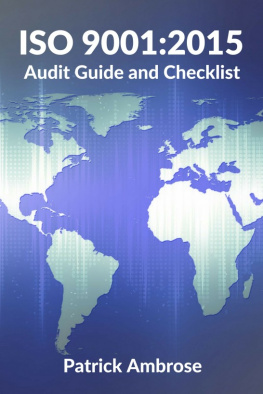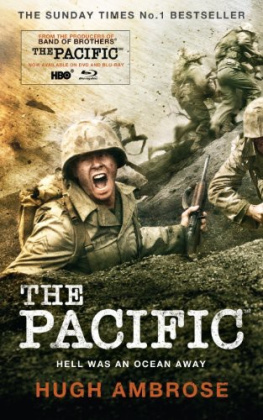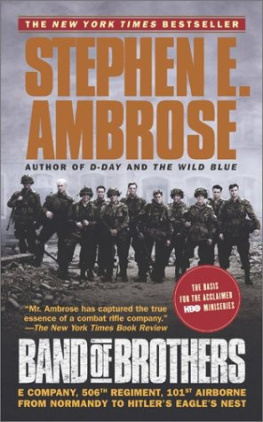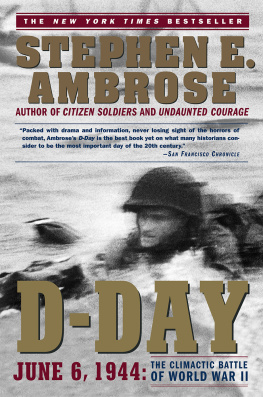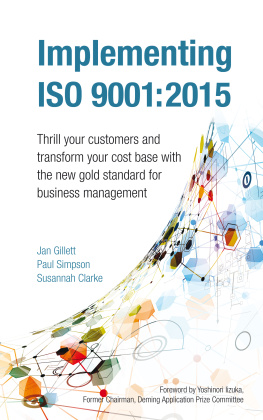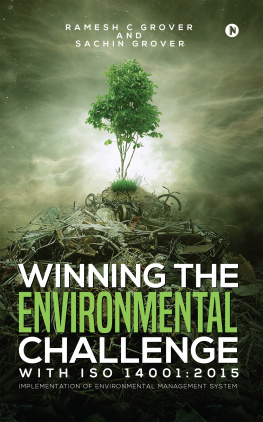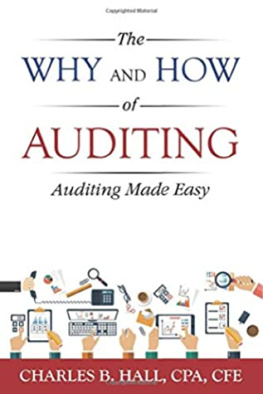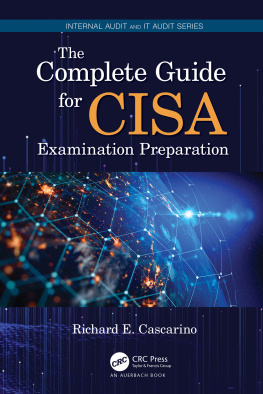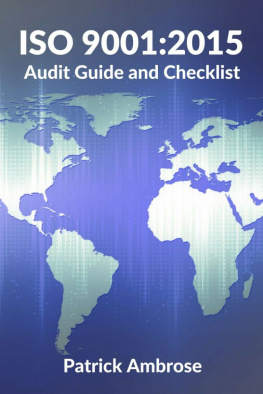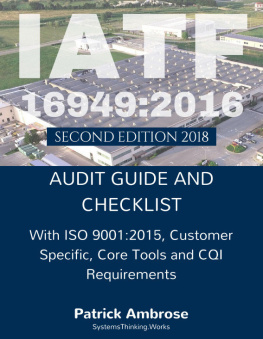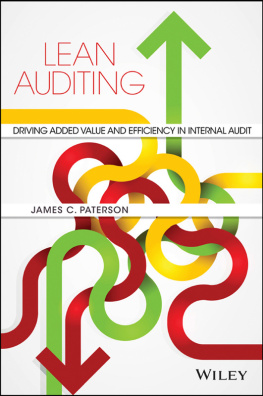ISO 9001:2015 AUDIT GUIDE ANDCHECKLIST
Copyright 2016
Patrick Ambrose
Published bySystemsThinking.Works
Distributed by Smashwords
Second Edition
January 2016
This publication is protected by Copyright Law,with all rights reserved. No part of this publication may be storedin a retrieval system, transmitted or reproduced in any way,including but not limited to photocopy, photograph, magnetic orother record, without the prior agreement and written permission ofthe author at systemsthinking.works.
Visit
https://systemsthinking.works
to learn more
This ebook may not be re-sold or given away toother people. If you would like to share this book with anotherperson, please purchase an additional copy for each recipient. Ifyoure reading this book and did not purchase it, or it was notpurchased for your use only, then please return to your favoriteebook retailer and purchase your own copy. Thank you for respectingcopyright.
Table of Contents
Forward
Creationof this new guidebook and checklist was a result of many, manydiscussions with internal auditors, would be internal auditors andthose responsible for the outcomes and value of internal audits. Acommon problem was the conflict between a desire to do processaudits that are not driven by meaningless checklist questions, andthe needs of auditors who often spend only a very small fraction oftheir time doing management system audits. It seemed that there wasno getting away from some kind of resource that auditors could useto help them through their audits. Yet checklists had proven to benon-value added. The result is this book. The questions listed inthis book are by definition a checklist, however the intent is thatthe questions will be used by the auditor, not asked of theauditee. The questions are those that the auditor must answerthrough the process of finding evidence. Then, based on theevidence they must determine the effectiveness of the system beingaudited. Many of the questions listed are ones that can be answeredthrough observation. Many will be answered in conjunction withother information gathered during the audit. Other questions askthe auditor to make a value judgment. In this way it is hoped thatauditors will have a guide, while enabling them to use a processapproach when auditing. This book could not have been writtenwithout help, and I received a great deal of help from some veryspecial people. My wife Patricia was my editor, proof reader,cheerleader and motivator. Without her constant support, I probablywould not have finished this book. And, my son Devon reviewed itand did nearly all of the editing and software work. Devon is alsoknowledgeable and experienced in auditing management systems. Hehas a very sharp mind and I respect and appreciate hisopinions.
Andfinally I would like to thank you, the user of this book. Isincerely hope you will use this book to provide your managementwith the information to achieve their goals and objectives, toeffectively satisfy their customers expectations, and to providetheir employees with a stable, interesting and exciting place towork.
Sincerely
PatAmbrose
INTRODUCTION
There isan important consideration to make before choosing to use thechecklist included in this Guidebook. You should carefullydetermine your objective with regard to your ISO 9001 QualityManagement System. If what you are looking for is the easiest wayto get ISO 9001 registered, or if your aim is to do the veryminimum needed for conformance, this IS NOT the checklist for you.Every question included in this checklist is designed to promotebest practice. The checklist is designed to provide value toorganizations that have a desire to get their moneys worth andmore out of their systems. The questions strive to provide a valueadded effective and efficient quality management system. Thischecklist will help your organization to satisfy your customers,provide added value to your customers and provide value to yourstakeholders but at no time does it dwell on the minimum. Theinterpretations of the requirements and the questions it drives aredesigned at all times to help create a value added system.Certainly you have the right and I would expect that you will skipquestions that you believe, have no value to your organization. Iwould also expect that you may modify questions or even addadditional questions of your own. I welcome your participation inthis. In addition to audit questions, this checklist providesguidance for auditors during the process. AP or (Audit Process)notes provide valuable direction as to how and when to take note ofspecific data that will become important further on in the audit.These notes are the result of many years of best practice auditexperience. Also within the checklist are BP (Best Practice)questions which are there to help organizations that want all ofthe value possible from their systems. As you can see, this is notjust an audit checklist. It was designed from the beginning topromote a high value, effective and efficient managementsystem.
1.0AN INTRODUCTION TO ISO 9001:2015
With this newInternational Standard, some of the clause structure andterminology in ISO 9001:2008, have been changed to improvealignment with other management systems standards.
Basic Changes
The adoption of the HLS ( standardized High LevelStructure)
An explicit requirement for risk-based thinking to supportand improve the understanding and application of the processapproach.
Fewer prescribed requirements.
Less emphasis on documents.
Improved applicability for services.
A requirement to define the boundaries of the QMS.
Increased emphasis on organizational context. (Link betweencustomer expectations, organizational objectives, the QualityPolicy, process objectives and process measurement)
Increased leadership requirements. (ActiveParticipation)
Greater emphasis on achieving desired outcomes to improvecustomer satisfaction. (Performance Measurement)
Major differences in terminology between ISO 9001:2008 andISO 9001:2015
Productsfrom 2008 has become Products and services. Exclusions are Nolonger used in 2015. Documentation, Records is now DocumentedInformation. Work Environment has morphed into Environment for theoperation of processes. Purchased Product is now externallyprovided products or services. Suppliers are now External Providersand Preventive Action is gone.
It isimportant to recognize that the changes in the structure andterminology do not need to be reflected in the documentation of anorganizations quality management system. As in the 2008 version ofthe ISO 9001 standard, the structure of clauses is intended toprovide a coherent presentation of requirements rather than a modelfor documenting an organizations QMS (Quality Management System).There is no requirement and no intention for the structure of anorganization's quality management system documentation to mirrorthat of this International Standard.
There isalso no requirement for the terms used in an organizations QMS tobe replaced by the terms used in this International Standard.Organizations can choose to use terms which suit their operations.For example:
ISO9001; 2015 could be
external providersupplier, 'partner orvendor
Management Review Monthly Operations Meeting
NonconformanceITBF Issue To Be Fixed
In factunique terms adopted for your organization can enhance theeffectiveness of the system by eliminating old biases, andcriticisms born from misapplications and misunderstandings of theintent of terms used in the past.
Thebasic concept of a process based system has not changed with the2015 standard and is if anything enhanced. Stressed in 2015 is therequirement to consider and analyze risk. While understanding riskwas implied in the 2008 version of the standard it is much moreexplicit in this new standard.
Next page
